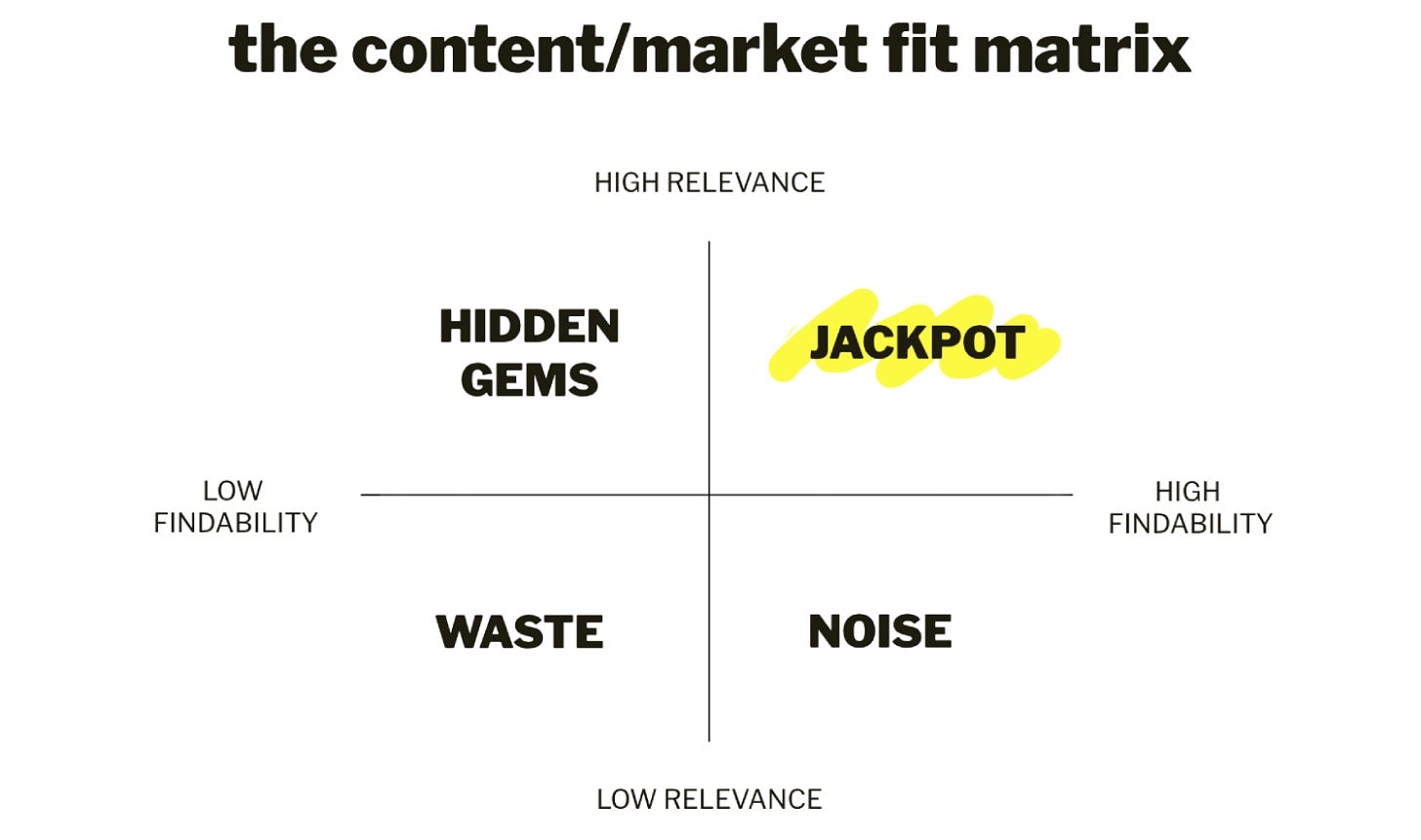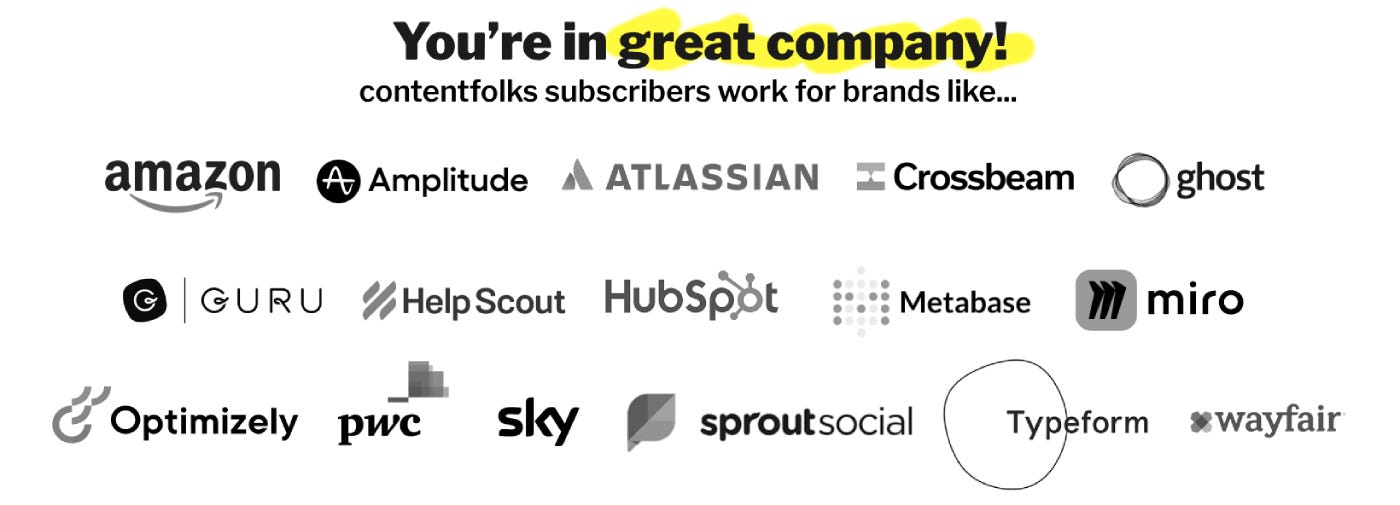You are reading contentfolks—a monthly(ish) blend of sticky notes, big content ideas, and small practical examples. Today’s topic is one I can, and will, talk about for HOURS, so I hope I did a good job of condensing it into a 5-min newsletter! ~fio
Hey 👋
Sometimes, you’ll be there doing a great job of consistently shipping well-researched, well-designed content—but your manager/client will look at business results, declare that “content isn’t working,” and pull the plug.
Here is a theory about why that happens.
The findability/relevance matrix
The goal of content marketing is to create and distribute content to attract and retain customers—but it’s not unusual to get so caught up in the frenzy of creating that we don’t pay enough attention to the middle part of the definition, distribute, and to the final word, customers.
What this leads to:
Findability issues: you publish good or even great content without spending enough time thinking about how potential and existing customers might find it → time and effort are wasted on content that goes unseen
Relevance issues: you publish good or even great content without making sure it is what potential and existing customers are interested in or need → time and effort are wasted on content aimed at the wrong audience
You can map the relationship between findability and relevance on this 2x2 matrix:
WASTE → content that is both hard to find and not relevant to the target audience, aka: a major waste of your time and resources
NOISE → content that is easy to find and brings traffic/impressions, but is largely irrelevant to target customers so it doesn’t have lasting business impact (and when you factor in salaries and other production costs, may actually be net negative)
HIDDEN GEMS → content that is highly relevant to target customers but goes largely unseen, likely for being buried on a website or not promoted and circulated enough, so only a fraction of the potential audience sees it
JACKPOT → content that is well-distributed, easy to find, and highly relevant to your customers’ interests and needs
Content fails when you don’t have content/market fit
In the world of startups, the concept of product/market fit describes the stage when a startup has identified a good market and is offering a product that can satisfy it. Oversimplifying things a lot, startup failure is often linked to a lack of product/market fit.
Likewise, the failure of a content marketing programme might* depend on its lack of content/market fit, which is when the content a company creates doesn’t work for the customers it’s trying to attract, whether because it doesn’t reach them (low findability), doesn’t fit their needs (low relevance), or both.
*Important caveat: I say might because content never exists in a vacuum, and your programme might still fail even if you have cracked the high findability & relevance quadrant. If your work is on point but the business has incorrect positioning, uncompetitive pricing, negative brand perceptions, or poor retention (to name just the obvious ones), there is very little you can do to mitigate or fix the situation → when doing your content analysis, it’s good practice to always look beyond your horizon and ask yourself (and others): what else could be happening here?
💡 A practical example
Here is what the lack of customer/content fit may look like:
A good example from my archives: back in 2017 at Hotjar, we launched a guide about and for early-stage SaaS startups that was thoroughly researched, looked amazing, made #1 on ProductHunt on launch day, was widely shared, ranked well, and brought us decent traffic:

…was Hotjar’s target customer an early-stage SaaS startup, though? Not really, which placed this guide in the high findability, low relevance quadrant. This project put us on the radar of a lot of people, except they weren’t the right people—by which I mean the ones who would buy our software and keep us employed as a result.
Later on, we learned to invest the same love, research, and work into topics that more closely related to our target customers, making our way into the high findability, high relevance quadrant—and staying there from then on.
Do YOU have content/market fit?
If you find yourself with an under-performing content programme, the findability and relevance matrix is a good starting point for determining if your problem is lack of content/market fit. Running a high-level audit with these quadrants in mind might help you identify the type(s) of content that fall into the low relevance quadrants, so you can both A stop creating new ones and B make a call on what to do with existing work (e.g. optimise, redirect, delete).
In general, for your programmes to be successful, you want to operate in the JACKPOT area + find the HIDDEN GEMS and give them more visibility + stop making NOISE + fully avoid WASTE. Easy 😉









Thank you for bringing this up! I stand by the power of proper distribution and repurposing. I've seen so many businesses create a blog post, maybe share it on social media, and be done with it. Some don't even use interlinking as a means of traffic distribution across the website. Such a waste of resources :(